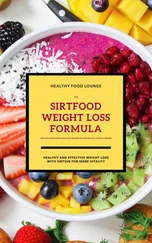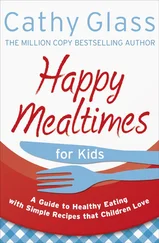At this point, it had been a year since she’d begun her journey. I had kept in touch with her via phone during her long saga. She now returned to my office for a GI follow-up. She told me her bowel movements were coming only once every three to four days, pelletlike and incomplete. Because constipation can accompany endometriosis, and especially given her new lesions, I thought the endometriosis was likely one reason why her stools were so odd. For the constipation, I recommended that she take Benefiber pills (guar) and add flaxseed (whole or ground), one to two tablespoons of each per day. I also started her on lactobacillus tablets. (A study in rhesus monkeys, which I talk about below, suggests that those with endometriosis had fewer lactobacilli. The benefits of lactobacillus supplements aren’t definitively known for humans.)
Most troubling, though, was the pain that resulted from her deep endometriosis. She couldn’t have intercourse or easily insert a tampon. I switched her to sulindac, a nonsteroidal drug, which I thought would work better than the ibuprofen.
Marci didn’t like the sulindac, because it made her dizzy, and so she returned to ibuprofen for pain, sometimes taking up to eleven tablets every day. The ibuprofen made her more constipated, though it did somewhat address her pain. When she decreased the amount of ibuprofen at my strong suggestion, her constipation improved. She decreased the ibuprofen and put up with her pain.
Over the next eight months, Marci continued to have constant pain in her pelvis, although she was able to make it through her busy day, through a delicate dance of medication management. The pain caused exhaustion; she told me she’d crawl into bed at the end of a long day, praying for a pain-free night’s sleep.
In spite of two surgeries, medical therapy and opinions from several surgeons, she continued to suffer. She had a choice: should she undergo hysterectomy, with the removal of the ovaries, which would likely take away all her symptoms? This is a difficult choice for a young woman, of course. Interestingly, if she did get pregnant in the future, the endometriosis would likely regress during pregnancy, though we don’t know why. (Getting pregnant in the first place, however, might be difficult without IVF [in vitro fertilization].)
Before resorting to hysterectomy, she was seen by another gynecologist, who found tenderness on the pelvic exam consistent with endometriosis. He referred her to a gynecological-oncological surgeon, who was very experienced in complicated surgeries as he specialized in cancer in the female organs. The best time to operate was thought to be when Marci was bleeding during her period, since the endometriosis lesions could be more easily identified as they would be active. Therefore, she stopped further doses of the Lupron and surgery was scheduled when her estrogen levels were at their peak, meaning the endometriosis would be at its most visible.
The surgery was a success. The visible endometriosis lesions were cauterized (ablated) or removed, and the scar tissue was cut (lysed). Now on continuous birth control pills, Marci has been almost pain free for over one year.
How is endometriosis treated?
The goal of the treatment is to reduce pain, improve the chances for pregnancy and reduce any associated side effects from the endometriosis. Estrogen is a major factor in stimulating the endometriosis to grow. Therefore, treatment is aimed at interfering with estrogen stimulation.
Endometriosis can be treated medically and surgically. Your doctor should discuss the treatments with you in detail, as every treatment has possible side effects. Here’s what he or she might suggest:
1 Oral contraceptive pills (cyclical or continuous).
2 Androgens: These are male hormones, like testosterone, which is the opposite of estrogen. A medication like Danazol increases testosterone and lowers estrogen. Beware—androgens can cause weight gain and masculinizing effects, like hair on your upper lip.
3 Gonadotropin-releasing hormones: These prevent the stimulation of the ovaries by your innate (natural) hormones and produce a low-estrogen environment. Lupron, leuprolide acetate, (given to Marci) is one such medication.
4 Progestins: Progestins stimulate progesterone receptors, helping to prevent ovulation and to lessen menstrual bleeding.
Are the symptoms the same for everyone?
The course of endometriosis varies from person to person. Marci’s odyssey was severe. In fact, one-quarter of women don’t have symptoms and might not even suspect a problem until they try to get pregnant and have trouble. Of those women with symptoms, pain can be mild or intense, like Marci’s. The pain can be cyclical, occurring in relation to the menstrual cycle (often before your period), or it can be constant.
In up to one-third of women, the intestinal tract (usually the surface of the small and large intestines) houses these rogue cells. When endometriosis involves the colon or the small intestine, 40 percent of women experience constipation; 33 percent, diarrhea; and 5 percent, both diarrhea and constipation. Rectal pain during a bowel movement can be severe, and bleeding from the rectum can occur. It’s little wonder that the diagnosis of irritable bowel syndrome is so often made in women who actually have endometriosis. A woman might even mistakenly be given the diagnosis of ulcerative colitis or Crohn’s disease when she has bleeding from her rectum due to endometriosis.
Where does this pain come from?
The pain brought on by endometriosis is due to a variety of causes.
1 Irritation of the nerves occurs. When the endometriosis grows, it acquires a nerve supply and irritation of the nerves can cause pain.
2 Blood is an irritant. When the endometrial tissue bleeds due to hormonal stimulation, the blood can cause all sorts of inflammatory cells to migrate into the affected area.
3 Inflammatory cells release compounds that can cause pain. These substances stimulate nerves or cause pain directly by inducing inflammation, just like when you get a bad cut that develops inflammation around it. There are medications that act directly against the formation of these substances. These include aspirin, ibuprofen (Motrin), naproxen (Naprosyn) and sulindac (Clinoril). We use them to prevent menstrual cramps and for other aches and pains.
Do women with endometriosis tend to get other illnesses more often than women without endometriosis?
According to a survey conducted in 1997 by the Endometriosis Association, many conditions are found to occur more frequently in women with endometriosis. The most common coexisting conditions are allergies and asthma. Women with endometriosis also have a high prevalence of hypothyroidism, fibromyalgia, chronic fatigue syndrome, rheumatoid arthritis, systemic lupus erythematosus, Sjögren’s syndrome (dry eyes and mouth) and multiple sclerosis.
Is there a diet that I can follow that can help the endometriosis?
Maybe. The data suggest that diets may help, but there are few good studies. Here’s what I know.
In Japan a study showed that women who ate dietary soy isoflavones, which come from soybeans (tofu, for example), had fewer cases of advanced endometriosis, but the consumption of soy isoflavones did not affect the risk for early endometriosis. Soy isoflavones have estrogen-like activity but also can have weak antiestrogen properties. In this case, it was speculated that the antiestrogen properties decreased the risk for advanced endometriosis. Fish oil decreases the size of the endometriosis lesions in animals but hasn’t been shown to decrease the risk for endometriosis or the size of endometriosis lesions in women.
Do probiotics help?
I wish I could tell you definitively, but I can’t. The only evidence that suggests they might help is that the types of bacteria in the guts of monkeys with endometriosis are different from those in healthy monkeys. In monkeys with endometriosis, there are fewer lactobacilli. Whether or not endometriosis can be improved by taking probiotics containing lactobacilli just isn’t known.
Читать дальше












